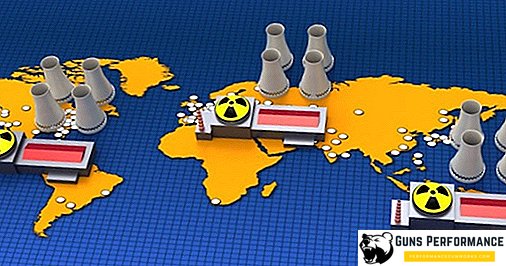Those who watched the stars attentively at least once in the evening could not fail to notice the bright point, which with its brilliance and size stands out from the rest. This is not a distant star whose light has been reaching us for millions of years. It shines Jupiter - the largest planet of the solar system. At the time of closest approach to the Earth, this heavenly body becomes most noticeable, losing in brightness to our other space companions, Venus and the Moon.
The largest of the planets of our solar system became known to people many thousands of years ago. The very name of the planet speaks of its significance for human civilization: out of respect for the size of the heavenly body, the ancient Romans gave it a name in honor of the main ancient deity - Jupiter.
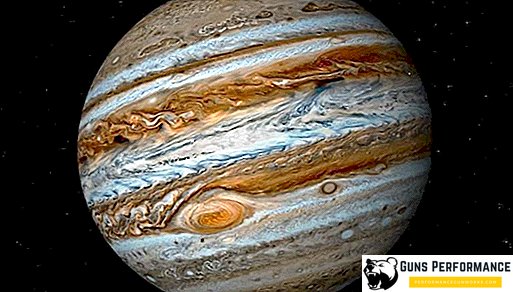
The giant planet, its main features
Studying the solar system within the zone of visibility, a person immediately noticed the presence in the night sky of a huge space object. Initially it was thought that one of the brightest objects in the night sky was a wandering star, however, over time, the different nature of this celestial body became clear. The high brightness of Jupiter is explained by its colossal size and reaches maximum values during the rapprochement of the planet with the Earth. The light of the giant planet is -2.94 m of apparent magnitude, losing in brightness only to the brightness of the Moon and Venus.
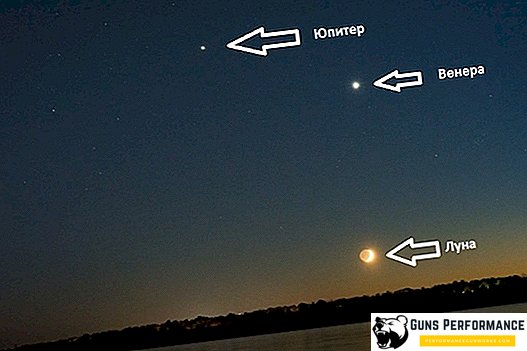
The first description of Jupiter, the largest planet of the solar system dates from the VIII-VII century BC. e. The ancient Babylonians observed a bright star in the sky, personifying it with the supreme god Marduk, the patron saint of Babylon. In later times, the ancient Greeks, and then the Romans, considered Jupiter, along with Venus, one of the main luminaries of the celestial sphere. Germanic tribes endowed the giant planet with mystical divine power, giving it a name in honor of its main god Donar. Moreover, almost all astrologers, astronomers and forecasters of antiquity always in their predictions and reports took into account the position of Jupiter, the brightness of its light. In later times, when the level of technical equipment made it possible to more accurately conduct observations of space, it turned out that Jupiter clearly stands out in comparison with other planets in the solar system.
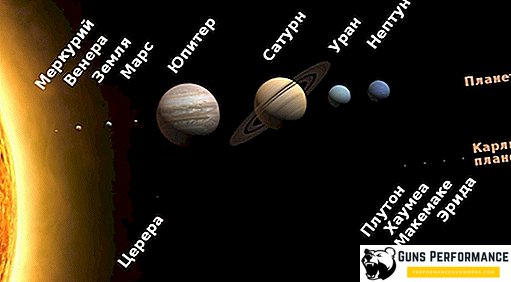
The real size of a small bright point on our night has tremendous values. The radius of Jupiter in the equatorial zone is 71490 km. In comparison with the Earth, the diameter of the gas giant is slightly less than 140 thousand km. This is 11 times the diameter of our planet. Such a grand size corresponds to the mass. The giant has a mass of 1.8986x1027kg and weighs 2.47 times more than the total mass of the remaining seven planets, comets and asteroids belonging to the solar system.
The mass of the Earth is 5.97219x1024 kg, which is 315 times less than the mass of Jupiter.
However, the “king of the planets” is not the largest planet in all respects. Despite its size and huge mass, Jupiter is inferior in density to 4.16 times our planet, 1326 kg / m3 and 5515 kg / m3, respectively. This is due to the fact that our planet is a stone ball with a heavy inner core. Jupiter is a dense accumulation of gases whose density is correspondingly less than the density of any solid.
Another interesting fact. With a fairly low density, the force of gravity on the surface of the gas giant is 2.4 times higher than the terrestrial parameters. Acceleration of free fall on Jupiter will be 24.79 m / s2 (the same value on Earth is 9.8 m / s2). All presented astrophysical parameters of the planet are determined by its composition and structure. Unlike the first four planets, Mercury, Venus, Earth and Mars, belonging to the objects of the Earth group, Jupiter heads the cohort of gas giants. Like Saturn, Uranus and Neptune, the largest planet known to us does not have the earth's firmament.
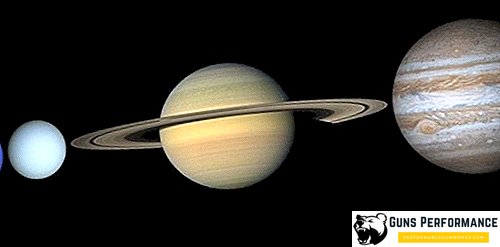
The current three-layer model of the planet gives an idea of what Jupiter really is. Behind the outer gaseous envelope, which constitutes the atmosphere of the gas giant, is a layer of water ice. At this transparent and visible to optical devices transparent part of the planet ends. Determine what color the surface of the planet is technically impossible. Even with the help of the Hubble Space Telescope, scientists were able to view only the upper atmosphere of a huge gas ball.
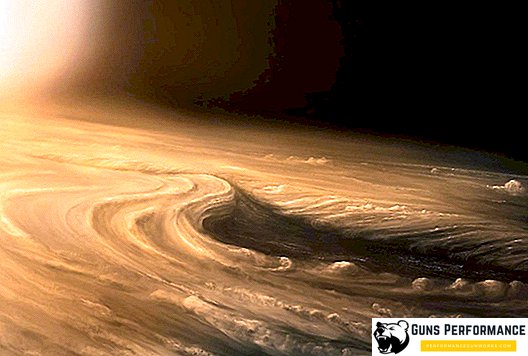
Further, if we move to the surface, a gloomy and hot world comes in, which consists of ammonia crystals and dense metallic hydrogen. High temperatures (6000–21000 K) and enormous pressure in excess of 4000 GPa dominate here. The only solid element in the structure of the planet is the stone core. The presence of a stone core, which in comparison with the size of the planet has a small diameter, gives the planet a hydrodynamic equilibrium. It is thanks to him that the laws of conservation of mass and energy act on Jupiter, keeping the giant in orbit and forcing him to rotate around his own axis. This giant has no clearly traceable boundary between the atmosphere and the central, rest of the planet. In the scientific environment, it is considered to be a conditional surface of a planet where the pressure is 1 bar.
The pressure in the upper atmosphere of Jupiter is low and is only 1 atm. But here reigns the kingdom of cold, since the temperature does not fall below the mark - 130 ° C.
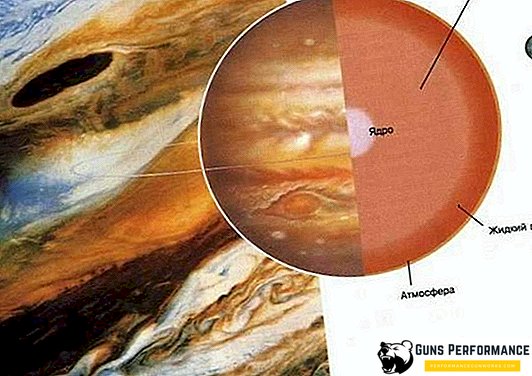
The atmosphere of Jupiter contains a huge amount of hydrogen, which is slightly diluted with helium and impurities of ammonia and methane. This explains the colorful clouds densely covering the planet. Scientists believe that this accumulation of hydrogen occurred during the formation of the solar system. The harder cosmic matter under the influence of centrifugal forces went to the formation of the terrestrial planets, while the lighter free gas molecules under the influence of the same physical laws began to accumulate in bunches. These particles of gas and steel have become the building material of which all four planets are made up - giants.
The presence of hydrogen on the planet in such an amount, which is the main element of water, suggests the existence of huge amounts of water resources on Jupiter. In practice, it turns out that sudden changes in temperature and physical conditions on the planet do not allow water molecules to move from a gaseous and solid state to a liquid.
Astrophysical parameters of Jupiter
The fifth planet is also interesting for its astrophysical parameters. Being behind the asteroid belt, Jupiter conditionally divides the solar system into two parts, exerting the strongest influence on all space objects in its sphere of influence. The nearest planet to Jupiter is Mars, which is constantly in the sphere of influence of a magnetic field and the force of gravity of a huge planet. The orbit of Jupiter has the shape of a regular ellipse and a slight eccentricity, only 0.0488. In this regard, Jupiter almost all the time resides from our star at the same distance. At its perihelion, the planet is at the center of the solar system at a distance of 740.5 million km., And at aphelion, Jupiter is at a distance of 816.5 million km from the Sun.
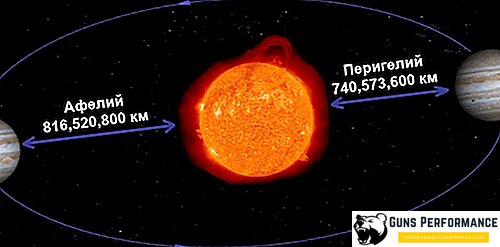
Around the Sun the giant moves rather slowly. Its speed is only 13 km / s, whereas on Earth this parameter is almost three times as high (29.78 km / s). Jupiter makes the whole journey around our central luminaries in 12 years. The speed of the planet around its own axis and the speed of the planet in orbit are strongly influenced by the neighbor of Jupiter - the enormous Saturn.
Amazing in terms of astrophysics and the position of the axis of the planet. The equatorial plane of Jupiter is only 3.13 ° deflected from the orbital axis. On our Earth, the axial deviation from the orbital plane is 23.45 °. The planet is lying on its side. Despite this, the rotation of Jupiter around its own axis occurs with great speed, which leads to the natural compression of the planet. According to this indicator, the gas giant is the fastest in our star system. Jupiter rotates a little less than 10 hours around its own axis. To be more precise, the cosmic day on the surface of the gas giant is 9 hours 55 minutes, while the Jupiterian year lasts 10,475 Earth days. Due to these features of the location of the axis of rotation, there are no seasons on Jupiter.
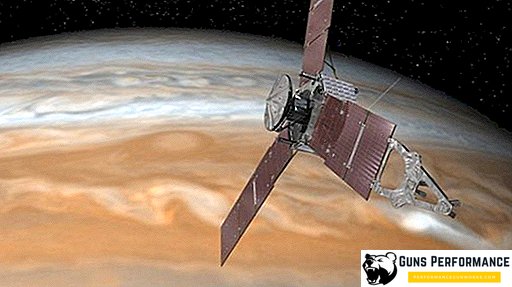
At the point of closest approach, Jupiter is located at a distance of 740 million km from our planet. This path modern space probes flying in space at a speed of 40,000 kilometers per hour, overcome in different ways. The first spacecraft in the direction of Jupiter "Pioneer 10" was launched in March 1972. The last of the vehicles, launched in the direction of Jupiter, was the automatic probe "Juno". The space probe was launched on August 5, 2011 and only five years later in the summer of 2018 reached the "planet-king" orbit. During the flight, the Yunona apparatus made a 2.8 billion km-long path.
Satellites of the planet Jupiter: why are there so many?
It is not difficult to guess that such impressive dimensions of the planet determine the presence of a large retinue. By the number of natural satellites, Jupiter has no equal. There are 69 of them. In this set there are also real giants, comparable in size to a full-fledged planet and very small, barely visible with the help of telescopes. Jupiter has its own rings, similar to the system of rings of Saturn. The smallest elements of particles, captured by the magnetic field of the planet directly from space during the formation of the planet, became the rings of Jupiter.
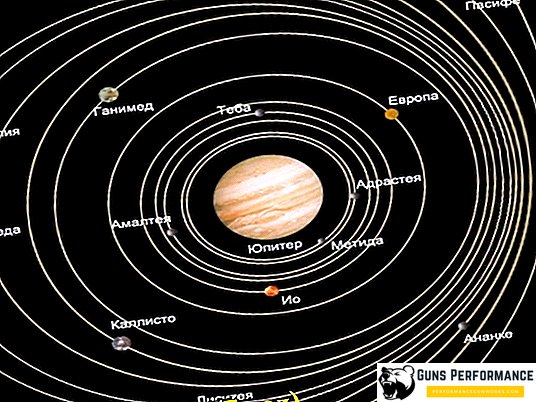
Such a large number of satellites is due to the fact that Jupiter has the strongest magnetic field, which has a huge impact on all neighboring objects. The force of attraction of the gas giant is so great that it allows Jupiter to keep around itself such an extensive family of satellites. In addition, the action of the magnetic field of the planet is enough to attract all the itinerant space objects. Jupiter performs the function of a space shield in the Solar System, catching comets and large asteroids from outer space. The relatively quiet existence of the inner planets is explained precisely by this factor. The magnetosphere of a huge planet is more powerful than the Earth’s magnetic field several times.
For the first time Galileo Galilei met with the satellites of the gas giant in 1610. In his telescope, the scientist saw four satellites at once moving around a huge planet. This fact confirmed the idea of a heliocentric model of the solar system.
The size of these satellites, which can even compete with some planets of the solar system, is amazing. For example, the satellite Ganymede is larger in size than Mercury, the smallest planet in the solar system. Few Mercury is inferior and another giant satellite - Callisto. A distinctive feature of the satellite system of Jupiter is that all the planets revolving around the gas giant have a solid structure.
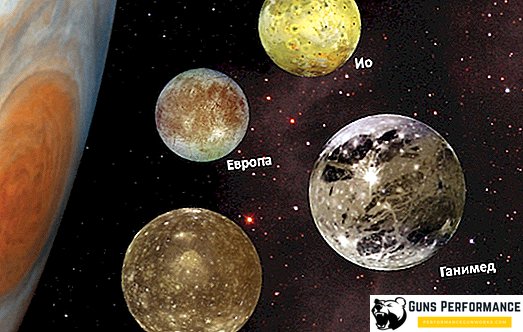
The sizes of the most famous satellites of Jupiter are as follows:
- Ganymede has a diameter of 5260 km (diameter of Mercury is 4879 km);
- Callisto has a diameter of 4820 km;
- Io diameter is equal to 3642 km;
- Europe has a diameter of 3122 km.
Some satellites are closer to the mother planet, others - farther. The history of the appearance of such large natural satellites has not yet been disclosed. Probably we are dealing with small planets that once rotated with Jupiter in the neighborhood. Small satellites are fragments of destroyed comets arriving in the solar system from the Oort cloud. An example is the fall on Jupiter of the comet Shoemaker-Levy, observed in 1994.
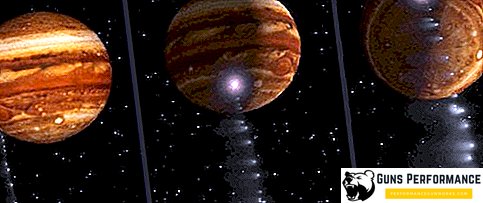
It is the satellites of Jupiter that represent the objects of interest to scientists, since they are more accessible and similar in structure to the planets of the terrestrial group. The gas giant itself represents an environment hostile to humanity, where it is inconceivable to suggest the existence of any known forms of life.







